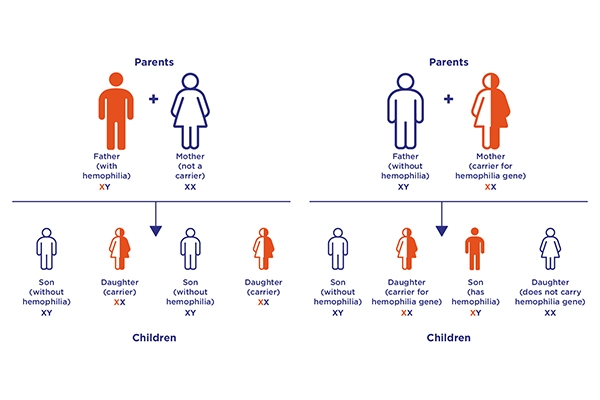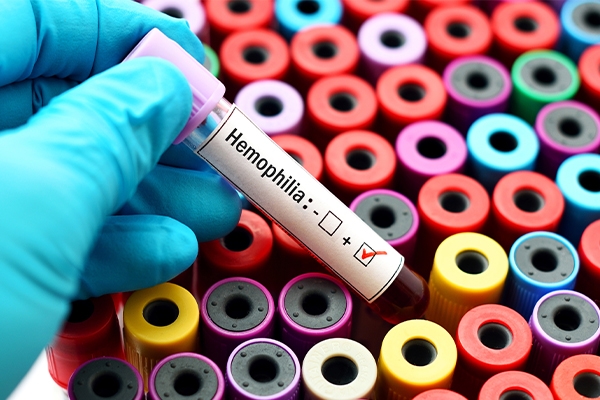Hemophilia: When Blood Fails To Clot

Zhang Yixing, also known as Lay in the Korean boy band EXO, has hemophilia. If he has cuts or bruises, this talented young man is difficult to heal. When he is injured, many fans are concerned. Because hemophilia can be fatal if not treated properly.
What is hemophilia?
It is a condition in which blood fails to clot. This is the definition of hemophilia that we learned in school. The point is that when someone with hemophilia is injured and bleeds or bruises, it can take a long time to heal.
Hemophilia is also known as an inherited disease that usually appears in boys. Girls serve as the carrier of genes for her offspring.
Cause and effect

Blood is made up of a variety of proteins. There are clotting factors and coagulation factors. When an injury occurs, these factors are responsible for stopping the bleeding. Hemophilia can occur when factor VIII (the anti-hemophilic factor) or factor IX (the Christmas factor) levels in the body are extremely low.
So, hemophilia is caused by a mutation (change in the arrangement) in a gene that instructs the body to produce the blood clotting factor. The mutation disables or even eliminates the blood clotting protein.
Because it is a genetic disease (mutation on the X chromosome), hemophilia sufferers generally show symptoms from early life. However, it is possible that new symptoms may appear later in life, for example, in middle age. Elderly. Young woman who is pregnant. Or, a young woman who has given birth.
To understand why hemophilia is inherited, consider the following illustration:
The normal female chromosome is XX. The normal male chromosome is XY. Let's say the hemophilia chromosome is Xh. If Sesy is a carrier of hemophilia (XXh). Jeremy, her husband, is normal (XY). The possibility that arises if Sesy and Jeremy have children is:
- Boys with XhY chromosome. Have hemophilia. Possibility: 25%.
- Boys with XY chromosome. Normal. Possibility: 25%.
- Girls with XX chromosome. Normal. Possibility: 25%.
- Girls with XXh chromosome. Carrier to hemophilia. Possibility: 25%.
Girls will only develop hemophilia if both parents have Xh chromosomes. Meanwhile, boys will not experience hemophilia even though the father has hemophilia (XhY) but the mother is normal (XX).
The impact of hemophilia, among others:
- Bleeding in the joints leads to chronic joint disease.
- Bleeding in the head and brain causes long-term effects, such as convulsions and paralysis.
- Bleeding into vital organs that cannot be stopped leads to death.
Types of hemophilia
Hemophilia is classified into two types based on its cause:
- Hemophilia A (classic hemophilia). This type is caused by a low or decreased level of factor VIII.
- Hemophilia B (Christmas disease). This type is caused by a low or decreased level of factor IX.
Other types that can occur are:
- Hemophilia C. This type is caused by a low or decreased level of factor XI (plasma thromboplastin antecedent).
- Hemophilia B Leyden. This type occurs when a person has hemophilia B at a young age and worsens with age.
Symptoms and diagnosis
Consult a doctor immediately if the following common symptoms appear:
- Bleeding in the joints (knee, elbow, or ankle), which causes swelling and pain.
- Bleeding into the skin (bruises) or muscles and soft tissues, causing blood clots (hematomas).
- Bleeding in the mouth and gums, or bleeding that is difficult to stop after a tooth has fallen out.
- Bleeding is difficult to stop after circumcision.
- Bleeding is difficult to stop after injections, such as vaccinations.
- Bleeding in the baby's head after birth difficulties.
- Blood in the urine or stool.
- Frequent or persistent nosebleeds.
Parents who have hemophilia or who may be hemophilia carriers should notify their doctor. This will assist the doctor in planning the best birth procedure for the baby. The baby could also be examined right away to determine whether or not he has hemophilia.
A series of blood tests are required to make a diagnosis. The goal is to determine whether or not the blood clots properly. If not, the exam is resumed with a factor test (blood clotting). The goal is to identify the source of bleeding disorders.
Hemophilia care

Because hemophilia is a genetic condition, treatment focuses on providing patients with long-term clotting factors with the goal of preventing bleeding.
Hemophilia is a genetic illness that cannot be prevented. If you notice regular bleeding without a clear explanation, schedule a checkup as soon as possible. If you are concerned about your heredity, we suggest digging into your family history for hemophilia and discussing the risk with your potential spouse. Understanding each other's conditions will make you and your partner more prepared and capable of overcoming them.
Hemophilia patients can receive a variety of treatments, depending on the type.
- Factor replacement therapy. The patient is given factor VIII concentrate for hemophilia A, factor IX for hemophilia B. The factors can be derived from plasma derivatives or synthesized from recombinant sources.
- Non-factor replacement therapy. One of the drugs used in this therapy is emicizumab, a synthetic protein that mimics the action of factor VIII. Emicizumab is administered via subcutaneous injection.
- Desmopressin. It is a synthetic version of the antidiuretic hormone that aids in bleeding control. This medication is given via injection and nasal spray.
- Aminocaproic acid. This acid prevents blood clots from breaking apart, preventing further bleeding. Tablets and liquids are both available.
- Hemgenix. The Food and Drug Administration (FDA) has approved this new drug, which has been shown to increase blood-clotting proteins and reduce bleeding by up to 54%.
Other treatments that can be given are gene therapy, anti-TFPI (tissue factor pathway inhibitor), and RNA interference (RNAi) therapy that targets antithrombin (one of the anticoagulants).
If you, a relative, or a friend has hemophilia and needs emotional support, don't worry. Join a guild, such as the Hemophilia Care Foundation. People with hemophilia are not alone, and they should not feel that way.
Hemophilia can be difficult to avoid. The key is to remain vigilant at all times. Keep track of your vitamin K intake, both from plant and animal sources. Vitamin K helps the liver in the production of blood clotting factors.
If you have any questions regarding hemophilia, click on Whatsapp.



